While several articles on the life and spirituality of this newly— canonized Saint of the Orthodox Church have now appeared in English, the following is the first to trace the spiritual tradition of which he was a part and to place him in historical perspective. The author, a graduate of St. Sergius Academy in Paris and a noted Russian theologian, wrote The Acquisition of the Holy Spirit in Ancient Russia and is currently writing a book on the Startsi of Optina.
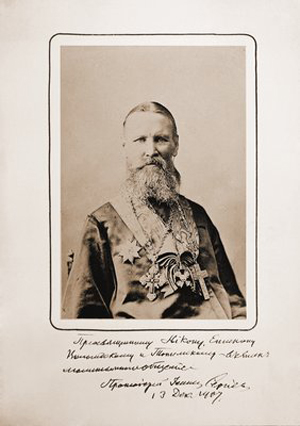
INTRODUCTION
Every kingdom divided against itself is brought to desolation; and every city or house divided against itself shall not stand. [1]
Never before has so much been spoken and written [2] about any of the saints or righteous men as about Father John of Kronstadt. For this reason we shall set ourselves the task, not so much of painting a complete picture of him—for this is well known to us all—as of characterizing his epoch and elucidating the historical significance of the person of Father John. We shall touch only in part on him himself and his works.
Father John lived at the time when the spiritual crisis which Russia was undergoing was reaching its high point: a fatal bifurcation reigned in all spheres of life in the Empire. On one side, the spiritual revival in the ascetic tradition which began in the 19th century and embraced believing Russians, was sending out its abundant shoots; on the other side, the overwhelming majority of society was in the grasp of an opposing current of atheistic and revolutionary activity foreign to the Russian people, coming from the West.
Father John was entirely a product of the movement of spiritual revival, he was entirely in its spirit and light; and the wave of this revival raised Father John to the very height of its crest. The Lord placed high upon a candlestand this His brightly-burning lamp.
The other wave of godlessness and destruction, the wave of the spirit of antichrist, raised to its height Lev Tolstoy, who indeed became its generally-acknowledged prophet. Father John rose up powerfully and sternly against the enemies of the Church and the government, unceasingly accusing them, calling to repentance, warning of Divine chastisement. It was in this that his prophetic calling and office lay. We shall pass now to a more detailed consideration of our subject.

I – FATHER JOHN IN THE SPIRIT AND POWER OF THE HOLY FATHERS
I am come to send fire on the earth; and what will I, if it be already kindled? [3]
The Path to Holiness
After the reforms of Peter the Great and those that followed them, directed against monasticism, there came an epoch of decline in Russian monasticism; but already in the 19th century a spiritual revival is to be noted. For this the foundation was laid by Archimandrite Paisy Velichkovsky: beginning in the second half of the 18th century he occupied himself with translations from Greek into Slavonic of the ascetic works of the holy Fathers (the Philokalia) and revived in his monastery in Moldavia the ascetic tradition of the ancient Near East. In this ascetic tradition, the center of gravity lay not in external but in internal ascetic endeavor (podvig), namely in overcoming the “old man,” in attaining passionlessness. Immediate encounter with God—the acquisition of the Holy Spirit—was the final end of all ascetic endeavors. In connection with this there was reestablished the system of spiritual direction by elders (startsi).
The revival of monasticism in Russia is connected also with the name of Gabriel, Metropolitan of St. Petersburg. In 1793 he published the Philokalia; besides that he appointed the students of Paisy as rectors of many Russian monasteries, and they also reintroduced into monastic ascetic discipline the ancient tradition which had been almost forgotten in Russia before this
In this period of revival a throng of holy ascetics appeared. To the early period belongs one of the greatest saints—St. Seraphim of Sarov (1759–1833). St. Seraphim was directed to Sarov by Starets Dosifei, who had a spiritual connection with Paisy Velichkovsky. Dosifei commanded St. Seraphim to perform unceasingly the Jesus Prayer. In the Sarov forest St. Seraphim practiced the ascetic life together with Fr. Mark and Abbot Nazary, who in his time had been called by Metropolitan Gabriel to Petersburg as advisor in the correction of obscure passages in the Slavonic translation of the Philokalia, being chosen for his personal knowledge of the spiritual life. One must presume that Fr. Nazary took the Philokalia to Sarov. “The gift of holiness which St. Seraphim possessed,”—as the well-known Church historian Kartashev has said,—“like ’every gift from above,’ came ‘from the Father of Lights,’ while the personal attainments of the Saint came from that vivifying stream of the Russian ascetic revival, along which the Saint formed the desire to conduct the ship of his life.”
Father John Sergiev was born in 1829, not long before the death of St. Seraphim, and, like him, he formed the desire to conduct the ship of his life along the same luminous and abundant current of spiritual revival. We do not know who among the clergy was especially close to Fr. John while he was studying in the Academy, or who his confessor was. Or were his teachers books alone? One may positively state that at that period there was no scarcity of experienced ascetic-directors; they could be found anywhere. Likewise one ascetic work after another began to appear in print. That was the time of the full bloom of the spiritual revival.
At about this time the students of the followers of Starets Paisy became concentrated primarily at Optina Monastery, which became a spiritual center and was made famous by its clairvoyant startsi and its works of enlightenment. Beginning in 1847 a group of professors and writers, under the direction of Starets Makary, translated from Greek and published works of the holy Fathers. Their activity—the dissemination of patristic literature—coincided with the academic years of Fr. John (1851-55) and the first years of his priesthood.
At the same time near Petersburg Archimandrite Ignaty Brianchaninov (1807–1867) was serving as rector in the Sergieva Hermitage which he had reestablished. His was the attractive and fascinating figure of a true ascetic. At the beginning of the reign of Nicholas I he graduated from the College of Military Engineering at the head of his class, being one of the Empress’ scholarship students and a favorite of the Emperor; but he preferred monastic endeavor to the brilliant worldly career that lay open before him.
Archimandrite Ignaty was a student of the Optina starets Lev (Leonid) and author of the Ascetic Works in which, basing himself on the teaching of the holy Fathers, he set forth the path of the “interior activity” [4] and cautioned against deception. As a writer Archimandrite Ignaty had command of a rare literary talent and a poetic gift. Already while Fr. John was a priest in Kronstadt, to be precise in 1858, Archimandrite Ignaty was consecrated bishop and left for Stavropol. After him the rector at Sergieva Hermitage[5] was Archimandrite Ignaty Malyshev, his favorite student, who received the spirit of his teacher. The connection of Fr. John with Sergieva Hermitage in his youth is known, and it did not cease afterwards: on the death of Fr. Ignaty Malyshev in 1898 Fr. John read for him the prayer on the departure of the soul.
Another outstanding contemporary of Fr. John was Bishop Theophan Vyshensky (the Recluse, 1811–1894), who worked about 20 years (1873–1890) on the Russian translation of the Philokalia and through his writings and letters guided the believing part of his generation. While still a hieromonk he was an inspector at the Saint Petersburg Academy. This was between 1856 and 1858, that is, after Fr. John’s residence there. When Fr. Theophan, on his return from the Holy Land, became rector of the Academy, he was too late to find Fr John there. Thus it is possible that they never met face to face.
Nonetheless it is known that Bp. Theophan later, from his seclusion, warned Fr. John about the dangers of the path he had chosen: to be a healer of the sick outside the walls of a monastery, without the monastic experience and obedience.
This exceptional path, however, was not chosen by Fr. John arbitrarily. Illarion, a contemporary of St. Seraphim, while leading the ascetic life in the Reshminsky Hermitage started him on this path through the staritsa Paraskeva Ivanovna Kovrigina. Fr. Illarion told her: “The time has come for you to leave your home and set out on the path of good. Go to Kronstadt; there a new light of the Church of Christ has begun to shine—Fr. John! Go and serve him! My blessing will be with you.” According to Fr. John’s own words this staritsa persuaded him to pray for healing of the sick.
Although Fr. John served as a priest in the world and was not a monk, his inner life was entirely one of monastic asceticism, in accordance with the traditions of the holy Fathers. He constantly spoke of the interior spiritual activity, of the “unseen warfare”—not only against the passions, but also against “the subcelestial spirits of evil,” of “the prayer of the heart” and the power and efficacy of the “Name of Jesus.” He related in detail his own spiritual activity in his “Conversation” of Dec. 12, 1900, on the occasion of the 45th anniversary of his ordination as priest. Here he touched on the first steps of the path of his spiritual warfare. But self-examination, knowledge of himself, constant prayer,—these were the occupation of his whole life to the very end. The most profound humility was his shield and visor: “In my body I am earth and ashes, but my soul lives and rests only in God. He is the lucidity of my thoughts and the strength of my heart; I myself am nothing.”

Here is what Fr. John says of himself in the above-mentioned “Conversation.”
“Once ordained a priest and pastor, I soon learned through experience with whom I had entered into combat in my spiritual arena, namely with the powerful, cunning, unsleeping prince of this world, who breathes evil and perdition and the fire of hell, and with the subcelestial spirits of evil… This battle with the strong and cunning invisible enemy plainly showed me how many infirmities, weaknesses, and sinful passions there were in me,—how strong a hold the prince of this world had over me, and how I had to struggle hard with myself, with my sinful inclinations and habits, and conquer them, so as to be as far as possible invulnerable to the arrows of the enemy. “The spiritual warfare began, and with it watchfulness over oneself, the sharpening of spiritual sight, teaching oneself uninterrupted secret prayer and the invocation of the All-saving Name of Christ; like the Psalmist, the Prophet-king David, I have come constantly to lift up the heart’s “eyes unto the hills”—to heaven, from whence has come to me manifest, quick, powerful “help” (Ps. 103:1-3), and my mighty enemies have been put to flight while I have obtained freedom and peace of soul… “This warfare has continued within me up to now; and the long period of spiritual warfare has given me much and especially experienced knowledge of all the subtleties of the spiritual warfare, of all the innumerable wiles of the invisible enemies and the firm, always certain invocation of the Name of the Lord Jesus, before which they cannot stand. In this unseen warfare I have come to know the perpetual nearness to me of the Lord, His immeasurable goodness, His quick hearing, the infinite holiness of His being, for which “an unrighteous thought is abomination” (Proverbs 15:26), as is a single momentary desire for sin, or pleasure in sin; the holiness of God irrevocably and unfailingly seeks and asks of all of us holiness in our thoughts, holy fervor in our feelings, holiness in every movement of our will, in our words, in our deeds. In this warfare I have come to know the immensity of God’s long-suffering to us; for He alone knows all the infirmity of our fallen nature, which He mercifully took upon Himself, except for sin (I Peter 2:22; Isaiah 53:9; I John 3:5, 4:10; Hebrews 4:15), and therefore He commanded us “seventy times seven” times to forgive the sins (St. Matt. 18: 22) of those who have fallen into them; and He has surrounded and continues to surround me every day with the joys of salvation from sin in peace and expansion of the heart. The Divine mercy which I have experienced and the perpetual nearness to me of the Lord confirm me in the hope of my eternal salvation and in that of those who follow and hear me to salvation, according to the word of the Scriptures, “Behold I and the children which God hath given me” ” (Hebrews 2:13; Isaiah 8:18).
Subsequently Fr. John speaks of how, “serving in full splendor marvellous Divine services and receiving daily the most holy and life-giving sacrament,” he felt within himself “its life-givingness for soul and body, its victory over sin and death, justification, peace, freedom, bold-ness of spirit.” Thus, through the interior activity and “daily concentrated and reverent service of the Liturgy,” Fr. John mounted from strength to strength and became worthy of ever greater gifts of the Holy Spirit.
According to the word of the Apostle: “ … for the perfecting of the saints, for the work of the ministry, for the edifying of the body of Christ” (Eph. 4:12), “… God hath set some in the Church, first apostles, secondarily prophets, thirdly teachers, after that miracles, then gifts of healings, helps…” (I Cor. 12:28). All these gifts, as we know, were poured out in abundance on Fr. John, and they testify to his holiness. In this brief sketch we will not touch on his clairvoyance, his working of miracles, or the innumerable healings he performed, but will pass on to his works, about which we will say a few words.
In his works Fr. John was inspired by the primary Orthodoxy of the holy Fathers.
Orthodoxy is not an abstract philosophy, nor a doctrine of human intellect, yet it is founded on the Gospel; it is not merely a particular form of worship, or rite, dogma, way of life, —but the living bond with God, authentic life in the Holy Spirit, in the Church which is nothing else than the truth of the Gospel, opened to us by the Divinely-inspired works of the holy Fathers and the decisions of the Ecumenical Councils. The Church of which Christ Himself is the head and which is directed here on earth by hierarchs who are successors of the Apostles, is the Mystical Body of Christ, in which the Holy Spirit forms, vivifies, gathers together, and unites all. In her all is harmoniously and organically bound together as in a living organism: thus theology and asceticism, spirituality and podvig, are inseparable. Dogma conditions asceticism, and inversely, in ascetic practice dogma reveals itself.
Thus the theology contained in Fr. John’s works flows directly from his ascetic practice. It is theocentric and appears as a rebirth of the spirit of the ancient holy Fathers. A theology of this sort, joined to personal holiness, is born of inspiration from above and is distinguished by its character from the theological constructions of the scientific mind. Fr. John taught only what he knew from personal experience, and his education and knowledge only broadened his mental horizon and made it possible for him to find forms of expression.
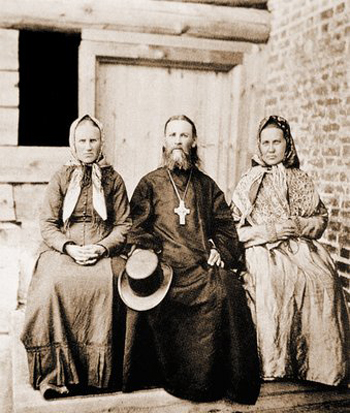
The works of Fr. John are free from the Western influences of humanism or moralism. Being himself a living vessel of the Holy Spirit, he drank from the same source from which the holy Fathers had drunk and thus threw out a bridge from the ancient spirit-bearing epoch to our time. Those closest to him were not his contemporaries, but such fathers and teachers as John Chrysostom (4th c.) or Simeon the New Theologian (10th c.)[6], and also the author of On Life in Christ, Nicholas Cabasilas (14th c.).
If the diary of Fr. John’s mystical experience—My Life in Christ—may be compared to a pile of multi-colored gems, the book of Cabasilas, On Life in Christ, is an unbroken golden chain of equal, interconnected links of logical arguments which flow one from another. It is a harmonious philosophical system
Metropolitan[7] Nicholas Cabasilas (d. 1371) took in his youth an active part in the political and court life of the stormy epoch under the Paleologues and the Cantacuzcnes. He participated in the famous hesychast controversy and was on the side of Gregory Palamas, whom he revered. His treatise on The Chatter of Nicephorus Gregoras (preserved in manuscript) testifies to his negative attitude toward the opponents of hesychasm.
Nicholas Cabasilas was an outstanding ecclesiastical writer. His chief works were On Life in Christ and A Commentary on the Divine Liturgy. The first of these was translated from German into Russian by the priest M. Bogolyubsky and published in 1874 in St. Petersburg. The second was included in the collection of Writings of the Holy Fathers and Teachers of the Church Relating to Commentary on the Divine Services, Vol. 3, St. Petersburg, 1857;[8] in manuscript it is preserved in the National Library in Paris, in a handwritten copy made by the Anthonite monk Ioasaf—the former Emperor John Cantacuzene, who on the title-page names his friend “the most wise, most learned, and holy among the holy.”
Catholic scholars speak of On Life in Christ thus: “It is full of material from the Holy Scriptures and the Fathers, and all is bound into a precise doctrine by a powerful speculative mind, subject to a serene piety. Simeon of Thessalonica, the best of succeeding liturgists, made use of him and imitated him, but with less talent and endowment.” One must presume that Fr. John was acquainted with these works of Metropolitan Nicholas Cabasilas; they are in harmony with his own spirit.
Nicholas Cabasilas develops the idea that the Christian should already in this perishing world begin the life which attains perfection only after death. Life consists of union with Christ and is accomplished through the sacraments: “Only under the action of the sacraments may organs be developed for the apprehension of spiritual life, and it is they that will make it possible on Judgment Day for one to enter into communion with Christ.”
In the first chapter of Cabasilas’ work is a concise discussion of the sacraments: Baptism, Chrismation, the Eucharist. Among the sacraments he singles out the Eucharist; one can always find parallel passages in Fr. John’s works. It is well-known that Fr. John, like Cabasilas, spoke about the Eucharist more than about anything else; My Life in Christ is entirely penetrated and animated by a liturgical point of view. “As far as is known to us from the history of the Church,” as one writer has said, “never has anyone so rapturously served, loved, adored, and praised the Divine Liturgy as did Fr. John of Kronstadt. It is doubtful if even John Chrysostom, that great teacher of the Church, was so enraptured by the Liturgy, spoke so much of it, or so much drew men to it by his own rapture and by his words, as blessed Fr John.” He spoke thus: “That the Lord is always with us is clearly proved to anyone who serves His Divine, life-giving Mysteries: here He allows us to touch Him, to put the hands of our heart into His nail-wounds and to put our fingers into His side.”
Having given a general idea of the meaning of the sacraments in his first chapter, Cabasilas in the following chapters discusses each of them separately and devotes the last two chapters: the sixth, to the means, drawn from the sacraments, whereby the life in Christ may be maintained; and the seventh, to the transfiguration of the soul that is accomplished under the action of the sacraments.
Let us quote several indicative passages, which testify to the affinity of soul of two Orthodox theologians who were separated from each other by six centuries.
Speaking of how “here on earth the spiritual life consists of the most intimate union with Christ,” Cabasilas clarifies the intimacy of this union. He says: “In the Scriptures there are indicated allegories or parables of this union: now a house and its inhabitants, again a vine and branches, now head and members, again a marriage; but none of them is equal to this union, for it cannot be expressed in words, since it is much stronger than the bond which is cited in any allegory.”
Fr. John repeats over and over in poetic images: “God is my being, my breath, my light, my strength…” “Consider how great is man,” he says; “God dwells in him and he in God,” so that in a pious Christian there lives not merely a man, but Christ Himself: “Yet not I live, but Christ liveth in me (Gal. 2: 20), because the whole soul becomes of Christ, as iron on burning coals becomes all fiery, becoming itself like burning coals,—all is fire, all is light, all is warmth!”
Cabasilas further explains that Christ in the spiritual life is “All in all”: “Being feeder, He is at the same time food; He provides the bread of life, and is Himself what He provides. He is life for the living, peace for those who breathe, clothing for those who desire to be clothed. By Him alone can we walk, and He is also the Path, and what is more a resting-place on the path, and its end.”
“How near to us has the Lord come through the Incarnation,” says Fr. John; “we eat and drink Him, breathe Him, are clothed in Him! —Oh, what a marvellous clothing, excellent, incorruptible, most peaceful, sweet, bright, warm, strengthening the soul…” “The Divine Liturgy is in truth a heavenly service on earth, during which God Himself in a special, most near and intimate way, is present and dwells with men, being Himself the unseen Celebrator, offering and being offered.”
“My Life in Christ”
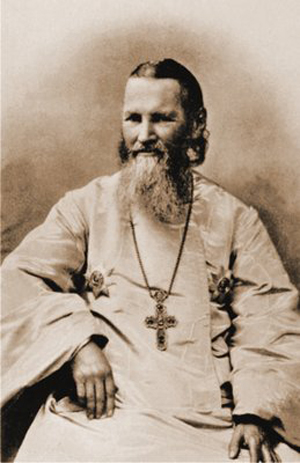
Fr. John’s work, My Life in Christ, is the diary of a contemplative, notations of illuminations and revelations, the prayerful striving of a soul to God and a real meeting with Him: “The eyes of the Master in the Temple of God are turned to each of us,” said Fr. John; “the heart of the Master is turned to each of us! Can one ask for greater nearness? When you stand at prayer weighed down by many sins and overcome with despair, begin to pray with hope and with a fervent spirit, call to mind that the Spirit of God Himself assists us in cur infirmities, interceding for us with inexpressible sighings. When you call to mind with faith this action of the Spirit of God in us, tears of tender feeling will flow from your eyes and you will feel in your heart peace, sweetness, justification, and joy in the Holy Spirit, you will cry with the voice of your heart: Abba, Father.”
Fr. John spoke with inspiration of the Church, both as eternal Truth and as the Body of Christ, and thus of her uniqueness and the unity in her of all members through Christ: “The Church is the eternal Truth, because it is united to Christ the Truth and animated by the Spirit of Truth. ‘I am with you alway’ (St. Matt. 28:20); the Church is His Body, as the Apostle says.”
“ ‘I am the Vine,’ said the Lord, ‘ye are the branches’ (St. John 15: 5), i.e., the one holy, catholic, and apostolic Church. Thus just as the Lord is holy, so is the Church holy; just as the Lord is ‘the Way, the Truth, and the Life’ (St. John 14:6), so too is the Church, because the Church is one with the Lord, she is ‘His body, of His flesh, and of His bones’ (Eph. 5:30), or His branches, rooted in Him the living Vine and taking nourishment from Him and growing in Him. Never imagine the Church as separate from the Lord Jesus Christ, from the Father and the Holy Spirit.”
Fr. John returned to the patristic understanding of the Church as life in the sacraments; the mystery of the Church is revealed in the Holy Eucharist, in which is the concentration of Christian existence:
“The Liturgy is spirit and life; its idea: “that all may be one” (St. John 17:21) in Christ; one must carry everyone in one’s heart, pray sincerely for all. Man, as the image of God, is immeasurably loved by God; man is the fallen image of God, restored by the extreme suffering for him of the Son of God. Thanks to the Holy Trinity, who has saved us! Man is continually restored, renewed, saved by the most pure Body and Blood of Christ, the deified. The Liturgy is the greatest miracle of the goodness and mercy of the omnipotent Lord God, a constant miracle: we should always be present at its performance, with joy and fear, with love for God and one another. During the Liturgy heavenly power are always invisibly serving.
Fr. John calls all to simplicity, to the restoration of the integrity of the personality.
Before his fall Adam was entirely concentrated interiorly by the Divine grace present in him and turned in his creative activity toward God in perfect love for Him and in fulfillment of His Divine will. He was entirely in a state of communion with and contemplation of God. In him all manifestation of the tripartite composition of the human being (i.e., spirit, soul, and body) were harmoniously united and hierarchically subordinated to the higher principle in man—his spirit. The spirit ruled over all, turning all toward a single higher aim. The first-created man was entirely penetrated with the grace of the Holy Spirit and entirely illuminated. The elements of the world could not harm man, and he was immortal.
Sin—this sting of death—brought into human existence the poison of ruin and decomposition. The Divine grace which had protected him and collected him into one, now left him. Then all the powers of the soul came into disorder and contradiction: body rose up against spirit—the slave against its lord. Thus was the order of the soul deformed and there arose the distorted man—the man of sin.
Passion is something new, introduced from without, the striving of previous qualities and capacities away from the right toward the wrong. Thus, a higher manifestation of the spirit—its capacity for striving upward, to God—when it lost communion with the Divinity turned downward and changed into Jove for oneself and for everything lower and created.
The aim of asceticism is the restoration of the lost integrity of the personality. “The chief characteristic of the religious mind,” as I. V. Kireyevsky[9] has said, basing himself on the Fathers, “consists of striving to collect all the powers of the soul into one powder. One must seek that inner concentration of existence, where reason and will, feeling and conscience, goodness and truth, wonder and desire, justice and mercy, and the whole orientation of the mind are poured together into a single living unity, and thus the essential personality of man is restored in its original indivisibility, which is manifested in simplicity; for simplicity is the consequence of the unity of all the powers of the human soul, of this integrity of the personality and striving toward the good and complete turning away from evil.”
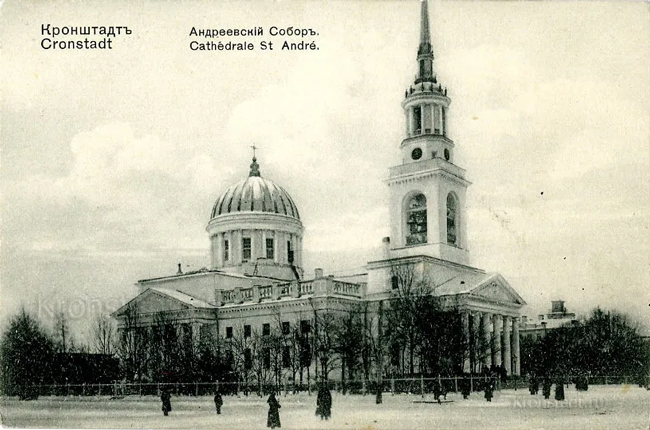
Of simplicity Fr. John spoke constantly. Its principle is in God:
“The uniquely simple Spirit in three Hypostases, the unique Wisdom in three Persons, has brought all from non-existence into existence. The unique tri-hypostatic Wisdom is God.”
“Love without reflection: love is simple. Love never errs. In the same way without reflection believe and hope: for faith and hope are that simple. Or even better: God, in Whom we believe and on Whom we hope, is simple Being in the same way that He is simple Love. Amen.”
“The Lord is so holy, so simple in His Holiness, that a single evil or impure thought deprives us of God the sweet and most sweet, pure and most pure peace and light of our souls. Hence the saints are all light, all one fragrance, like the light of the sun, like the purest air. Lord, grant me this simple holiness.”
“In prayer and in every action of your life flee suspiciousness and doubt and diabolical imaginings. May the eye of your soul be simple, so that it may illuminate all your prayer, all your deeds, and your whole life.”
“Our soul is simple, like thought, and swift, like thought and like lightning.”
“Call without doubting, in the simplicity of your heart, on the Lord God, and on the angels and saints, who by Divine grace and by communion or union with God and by the simplicity of their being are extraordinarily swift, like lightning, and hear and fulfill our prayers in accordance with the will of God.”
“…May we be simple, may we walk in simplicity of heart with everyone! Let us remember our high calling and chosenness, and may we unswervingly strive toward the honor of our higher Divine calling in Christ. We are the children of God, and heirs of Christ” (Rom. 8 :16, 17).
“Our soul is a simple being, and thus it cannot at one and the same time love both God and, for example, money” (St. Luke 16: 13, St. Matt. 6:24).
“Our soul is a simple being, as the image and likeness of God… And so, do always the will of God and you will be simple and at peace.”
“Try to attain to the simplicity of a child in your dealings with men and in prayer to God. Simplicity is man’s greatest good and dignity. God is completely simple, because He is completely spiritual, completely good. And may your own soul not be divided between good and evil.”
From simplicity flows unity in love. This unity of all rational beings is rooted in God. God by nature is one, and all that is in God is one with Him. Fr. John said: “Just as the Trinity, our God, is one Being, although also three Persons, so should we too be one. As our God is simple, so should we too be simple, as simple as if we were all one man, one mind, one will, one heart, one goodness without the least admixture of evil—in other words, one pure love, as God is Love. ‘That they may be one, even as We are one’ ” (St.John 17: 22).
“God is He Who is. In Him all holy, rational, and free creatures arc one. ‘As Thou, Father, art in Me, and I in Thee, that they also may be one in Us.’ I am nothing: God is everything in me and God is in everyone, and for everyone God is everything. ‘Our Father, Who art in heaven.’ Pay no attention to the disturbances, divisions, and enmity of the demons. Repeat: all is one. Say: we are one.”
We are members of the one Body of Christ—the Church, from whence is our unity, which is effectively realized in the Eucharist: “How long,” asks Fr. John, “will the holy Mysteries which we receive remind us that ‘we being many ate one body’ (I Cor. 10:17), and yet there will be no heartfelt natural union among us, as members of the one Body of Christ?..”
Calling all to unity, Fr. John showed that the cause of divisions is sin and the passions: “Attain unity, oh man,” he said, “in every way flee the spiritual division that comes through self-love, pride, envy, love of money, doubt, small faith… Union is God. Division is the devil. Church divisions are the work of the devil; heresy and schism arc the work of the devil.”
These profound thoughts of Fr. John concerning unity have a special meaning in our decadent age when faith and love have grown weak and as a consequence there have arisen church quarrels and schisms. These have been possible only because we have completely lost the understanding of the Church as the unique Mystical Body of Christ, and we have forgotten that apostasy from it draws with it a doom similar to that which a branch suffers when it is cut off from the tree, for thus the current of grace is stopped.
According to St. John Chrysostom, the whole responsibility for schism is borne not only by its perpetrators, or by the hierarchs and clergy of the schismatic body, but also by all laymen who follow them, since they support the schism.
—————————————
Not a few of the reflections scattered among the pages of Fr. John’s diary arc devoted to the mystery of holiness: “… For the saints, all is God, since the saints are true gods. ‘I,’ God Himself, Whose word is truth, ‘have said, ye arc gods’ ” (Ps 81: 6).
Many times Fr. John theologized on God the Word, and on the reality of the word: “Remember that in the word itself is contained also the possibility of the deed; one need only have firm faith in the power of the word, in its creative capacity. In God the deed is inseparable from the word; not one word will return to Him without power: ‘No word from God shall be void of power’ (St Luke 1:37). Thus it should be with us too, for we are images of the Word, and the Word has become most intimately united to us through the Incarnation, deifying us and accepting us as communicants of the Divine nature.”
“Rational being! Remember that you have your beginning from the Word of the Creator of all and in union (through faith) with the creative Word; by means of faith you can yourself be a material and spiritual creator…”
“…If you … speak the words of a prayer with feeling, your words will not return to you empty, powerless (like a shell without a kernel), but they will unfailingly bring you the very fruits that arc contained in the word, like fruit in its integument! But if you waste words, scatter them without faith, without feeling their power, like a shell without the kernel, they will return to you just as empty. Throw out a husk, and the husk returns.”
Fr. John touches on many other topics as well, but we will close with this and pass on to his prophetic office and the significance of this office as the Russian people’s last warning and call to repentance by God before the terrible Divine chastisement.
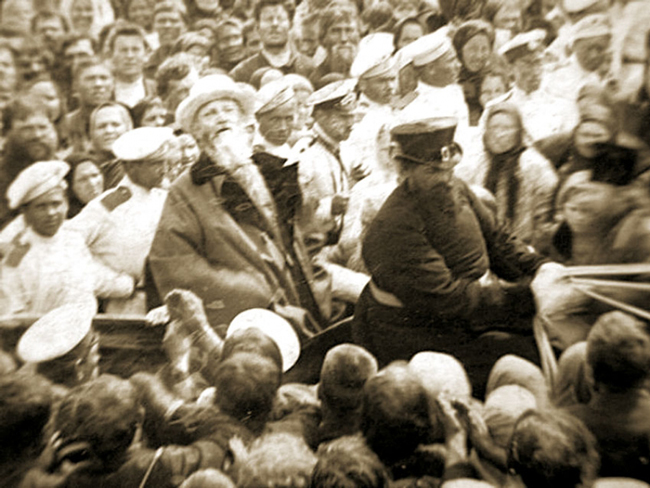
[1] St. Matt. 12:25
[2] i.e., in Russian; the reader should keep in mind throughout that the article was originally addressed to Russians (trans. note).
[3] St. Luke 12:49
[4] I.e., the practice of the Jesus Prayer (trans. note).
[5] Sergieva Hermitage is situated near the city of Oranienbaum, which is on the road from Kronstadt to Petersburg. (It was here where Father Herman of Alaska had first entered monasticism. Trans, note.)
[6] Archpriest M. Pomazansky, “St. Simeon the New Theologian and Fr. John of Kronstadt on the Church and Grace,” in The Orthodox Path (in Russian), Jordanville, N.Y., 1957.
[7] Catholic scholars have established that Nicholas Cabasilas was not Archbishop of Thessalonica, as historians have previously considered him to be; the Orthodox scholar Archimandrite Cyprian (Kern) calls Cabasilas Metropolitan of Dirrachys.
[8] A Commentary on the Divine Liturgy has recently appeared in an English translation by J. M. Hussey and P. A. McNulty, published in London by the S.P.C.K., 1960 (trans. note)
[9] A Russian philosopher of the 19th century who assisted Starets Makary of Optina in editing and publishing Starets Paisy Velichkovsky’s translations of the Fathers (trans. note).
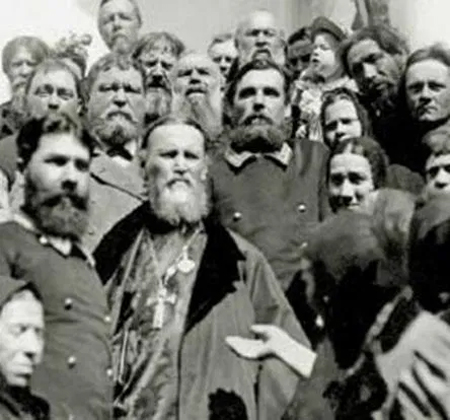
By I. M. Kontsevich
The Orthodox Word, Vol. 1, No. 2, March-April 1965, pp. 43-57

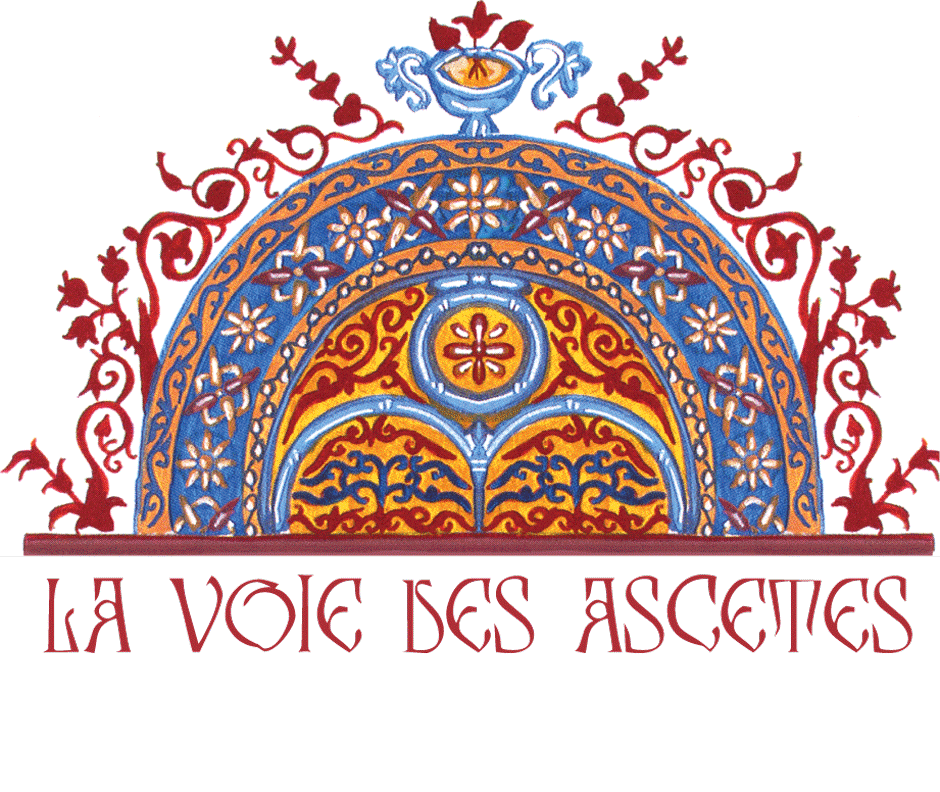
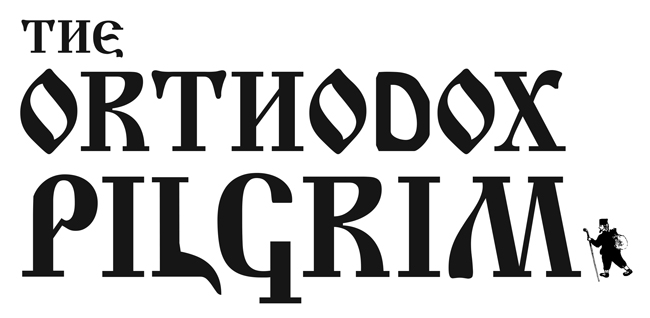

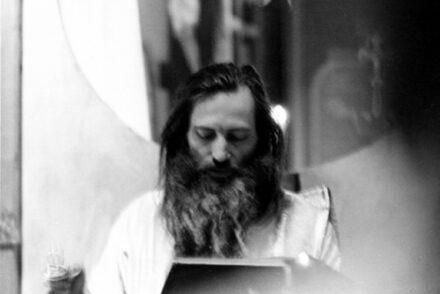
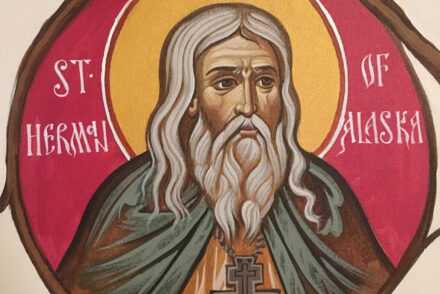
Pas de commentaire